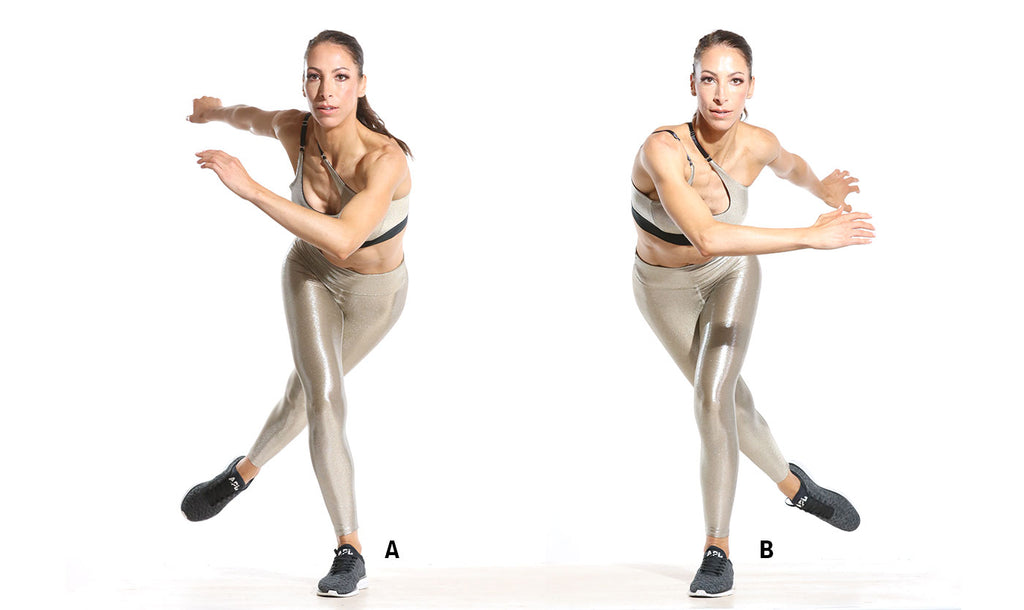Sandra Sorgini
Posted by TONY HUANG

As a secondary school educator, former university soccer coach, high level athlete, certified personal training specialist and mom of 2 young children I have been touched by mental health personally and professionally in intimate ways. The individuals I have been connected to through sport, education, fitness, family and friends are varied but one common thread remains. That is that all human beings encounter, cope with and manage health struggles.
I understand mental health as simply nervous system dysregulation and this is an aspect of health that is so near and dear to my heart. The nervous system becomes unbalanced and needs to be restored back to harmony. A dysregulated nervous system can cause depression, anxiety, insomnia, poor attention and poor memory, but can also lead to behaviours which result in an unhealthy, unbalanced life, cause relationship issues and result in poor life choices that are destructive to ourselves and others. Efforts to bring the nervous system back into harmony will be extremely effective.
No one person is exempt from mental health struggles just like no one person is exempt from physical health struggles. The two are linked and are important for deep health. It is so important that we speak about our experiences so that others who need help and support realize they are not alone in this.
I experienced nervous system dysregulation when my son was born. I experienced postpartum depression and was able to manage it with exercise. After the birth of my second child, 4 years later, coupled with an accelerated position in education leadership in a toxic work environment and a huge amount of stress and responsibilities, I was struggling the most I have ever struggled in my life. I simply was not able to cope and manage all the demands and responsibilities I had. As a result, I was diagnosed with major depressive disorder, anxiety disorder and adrenal insufficiency and burnout was suspected. I was completely dysregulated and had no idea how to get myself back nor did I even realize at that time that I wasn’t balanced.
Your nervous system needs attention and maintenance to help you perform at your best. Just like you train your body for fitness, it’s important to train your brain for mental fitness, to help you be resilient, especially during times of adversity and uncertainty.
First, recognize how your body manifests fight or flight (anxiety), or freeze or faint (depression). Once you become aware of which state you’re in, then you can apply the appropriate technique to regulate your nervous system back into balance.
I have used all of the strategies listed below in recent years and have experienced success using them. I also advise others, students, staff, clients and family and friends who may be feeling out of balance to give these strategies a try.
The following strategies are great for anxiety
1. Bilateral Stimulation
Bilateral Stimulation is implemented to stimulate both sides of the brain to redirect intense energy. Grab an object and move the object from side to side, following it with your eyes. When you do this you are redirecting that nervous energy and activating both sides of the brain. You can also do this reset by walking and talking!
2. Hug it Out
Hug yourself. Place both hands on opposite shoulders, crossing your arms in front of you. Apply gentle pressure to your shoulders, then move them down your biceps slowly until you come to your elbow, then repeat! This is also using bilateral stimulation.
3. Diaphragm Deep Breathing
Make sure you get up and breathe deeply through the belly to trigger the vagus nerve and rinse your body clean of cortisol and other stress hormones.
4. Flossing
When you floss your teeth you drop your jaw. A tense jaw initiates the fight or flight response. When we drop our jaw we signal our body to relax and the added bilateral stimulation of the motion of flossing brings us back into harmony.
5. EFT
Tapping points on your body, the Emotional Freedom Technique will help to regulate your system. Start at the top of your head and tap gently up there. Move to the temple, then between the eyebrows, then forehead, then cheekbone, then above the lip, then the chin, then the chest, then right under the armpit, top of the wrist and finally, right above the wrist on your pinky finger side. Notice your breathing afterward and how you feel.
Use the following strategies for depression:
- Cold Water Exposure
- Cold exposure and at the bare minimum cold to your face.
- Move your Body
- Movement is the best medicine. Get active and make it intense. Try a challenging, vigorous HIIT workout!
Dance
This is vigorous and bilateral stimulation at the same time. Put on uplifting music to get you into a great mood also. And be sure to sing to it which will also put you in a great mood!
Explosive Breaths
You can also breathe in and out with your arms up and down, hands open going up, closed fists pulling down to your shoulders like doing a pull-up. Do this fast in and out of your nose for 1 to 2 minutes. This is an aggressive form of breathing.
Eye Tracking
Follow your finger with your eyes all around, left right, rolling around, then back and forth, ending with your eyes up to create optimism.
My hope is that the conversation continues in regards to mental health. Strategies and tools to return the nervous system back into balance are useful and effective and we can all benefit from using them.
